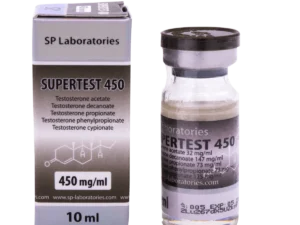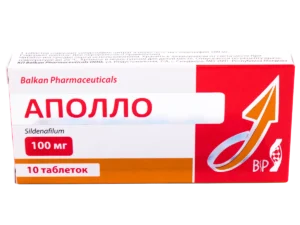Introduction
Performance-enhancing drugs (PEDs) have become a prevalent and controversial topic in the realm of sports. Athletes across various disciplines have been increasingly turning to these substances in an attempt to gain a competitive edge and achieve exceptional results. The use of PEDs not only poses ethical concerns but also raises serious health risks for athletes who succumb to the allure of these substances.
The desire to excel and push the limits of human performance is deeply ingrained in the world of sports. However, the use of PEDs undermines the very essence of fair play and jeopardizes the integrity of athletic competitions. These substances, such as anabolic steroids, human growth hormone (HGH), and stimulants, artificially enhance an athlete’s physical abilities, allowing them to surpass their natural limits. This creates an unfair advantage over clean athletes who rely solely on their natural talent and hard work.
Moreover, the use of PEDs poses significant health risks to athletes. While these substances may temporarily enhance performance, they come with a range of detrimental side effects. Steroids, for instance, can lead to liver damage, cardiovascular problems, and hormonal imbalances. HGH abuse can result in acromegaly, joint pain, and diabetes. Stimulants can cause heart palpitations, high blood pressure, and even addiction. Athletes who resort to PEDs not only compromise their long-term health but also set a dangerous precedent for younger generations who idolize them.
The battle against PEDs in sports is an ongoing challenge. Anti-doping agencies and sports governing bodies have implemented strict regulations and testing protocols to detect and deter the use of these substances. However, the ever-evolving nature of PEDs presents a constant cat-and-mouse game between doping authorities and athletes seeking to gain an unfair advantage. This highlights the need for continuous research, education, and innovative strategies to combat the use of performance-enhancing drugs effectively.
In this article, we will delve deeper into the world of performance-enhancing drugs in sports, examining the ethical implications, health risks, and the ongoing efforts to eradicate their use. By understanding the complexities surrounding PEDs, we can shed light on the importance of promoting clean and fair competition while safeguarding the well-being of athletes.
The Prevalence of Performance-Enhancing Drugs in Sports
Performance-enhancing drugs (PEDs) have infiltrated various sports disciplines, from cycling to athletics, baseball to weightlifting. The allure of these substances lies in their ability to enhance an athlete’s strength, speed, endurance, and overall performance. However, the use of PEDs not only undermines fair competition but also poses significant risks to athletes’ health.
The Ethical Dilemma
The use of PEDs in sports raises a fundamental ethical dilemma. Sports are meant to be a test of an athlete’s natural abilities, honed through rigorous training and dedication. When athletes resort to PEDs, they gain an unfair advantage over their competitors who choose to compete clean. This undermines the integrity of the sport and diminishes the value of hard work and talent.
Furthermore, the use of PEDs perpetuates a cycle of cheating and deception. Athletes who succumb to the temptation of doping not only betray the trust of their fans but also set a harmful example for aspiring athletes. The message becomes one of taking shortcuts and prioritizing victory at any cost, rather than embodying the values of sportsmanship, integrity, and fair play.
Health Risks
While the desire for enhanced performance may be understandable, the use of PEDs comes with severe health risks. Anabolic steroids, one of the most commonly abused substances, can lead to a range of adverse effects. These include liver damage, cardiovascular problems, infertility, and hormonal imbalances.
Human growth hormone (HGH) abuse, another prevalent form of doping, can result in serious health complications. Excessive HGH can lead to acromegaly, a condition characterized by the enlargement of facial features, hands, and feet. Joint pain, diabetes, and cardiovascular issues are also associated with HGH misuse.
Stimulants, such as amphetamines, are often used to enhance focus and energy levels. However, these substances can have detrimental effects on the cardiovascular system, including heart palpitations, high blood pressure, and in extreme cases, heart attacks.
The Battle Against PEDs
Recognizing the threat posed by PEDs, anti-doping agencies and sports governing bodies have implemented stringent measures to detect and deter their use. Athletes are subjected to regular testing, both in and out of competition, to ensure a level playing field. The World Anti-Doping Agency (WADA) has established a comprehensive list of banned substances and methods, along with strict penalties for those found guilty of doping.
However, the battle against PEDs is far from over. The ever-evolving nature of these substances presents a challenge for anti-doping authorities. As new drugs and methods emerge, testing protocols must adapt to keep up with the advancements in doping techniques. Moreover, the financial incentives and pressures to succeed in the highly competitive world of sports continue to tempt athletes to seek an unfair advantage.
Conclusion
The use of performance-enhancing drugs in sports remains a contentious issue. It not only undermines fair competition but also poses serious health risks to athletes. The battle against PEDs requires a multi-faceted approach, including stringent testing, education, and the promotion of clean and fair competition.
Efforts to combat doping must be ongoing and adaptable to stay ahead of the ever-evolving strategies employed by athletes seeking an unfair advantage. By upholding the values of integrity, sportsmanship, and fair play, we can ensure that sports remain a platform for showcasing natural talent, hard work, and the pursuit of excellence.
Practical Recommendations to Combat Performance-Enhancing Drugs in Sports
1. Strengthen Anti-Doping Measures
To effectively combat the use of performance-enhancing drugs, it is crucial to strengthen anti-doping measures. This includes increasing the frequency and randomness of drug testing, both in and out of competition. Anti-doping agencies should allocate more resources towards research and development of advanced testing methods to detect new and emerging substances. Additionally, there should be stricter penalties and consequences for athletes caught using PEDs, including longer bans and financial penalties.
2. Education and Awareness Programs
Education plays a vital role in preventing the use of PEDs in sports. It is essential to implement comprehensive education and awareness programs targeting athletes, coaches, and support staff. These programs should focus on the dangers and consequences of doping, emphasizing the importance of fair play, integrity, and the long-term health risks associated with PEDs. By providing athletes with the necessary knowledge and information, we can empower them to make informed decisions and resist the temptation to use performance-enhancing drugs.
3. Support for Clean Athletes
It is crucial to provide support and resources for clean athletes who choose to compete without the aid of PEDs. This includes creating a supportive environment that values and rewards clean athletes through sponsorship deals, endorsements, and recognition. Sports organizations should prioritize the promotion of clean competition and celebrate the achievements of athletes who uphold the principles of fair play. By doing so, we can create a culture that discourages doping and encourages clean athletes to excel.
4. Collaboration and International Cooperation
The fight against PEDs requires collaboration and international cooperation. Anti-doping agencies, sports governing bodies, and governments should work together to share information, resources, and best practices. This includes harmonizing anti-doping regulations and sanctions across different sports and countries to ensure consistency and fairness. By joining forces, we can create a unified front against doping and make significant strides in eradicating the use of performance-enhancing drugs in sports.
5. Research and Development
Continuous research and development are essential to stay ahead of the ever-evolving world of PEDs. Funding should be allocated to scientific research, aiming to identify new substances and methods used for doping. This research will help in developing more effective testing protocols and strategies to detect and deter the use of performance-enhancing drugs. Additionally, investing in research on alternative methods for enhancing athletic performance naturally can provide athletes with safer and legal alternatives to PEDs.
By implementing these practical recommendations, we can strengthen the fight against performance-enhancing drugs in sports. It is crucial to protect the integrity of sports, ensure fair competition, and safeguard the health and well-being of athletes. Together, we can create a future where clean and fair play prevails, inspiring the next generation of athletes to achieve greatness through natural talent and hard work.






